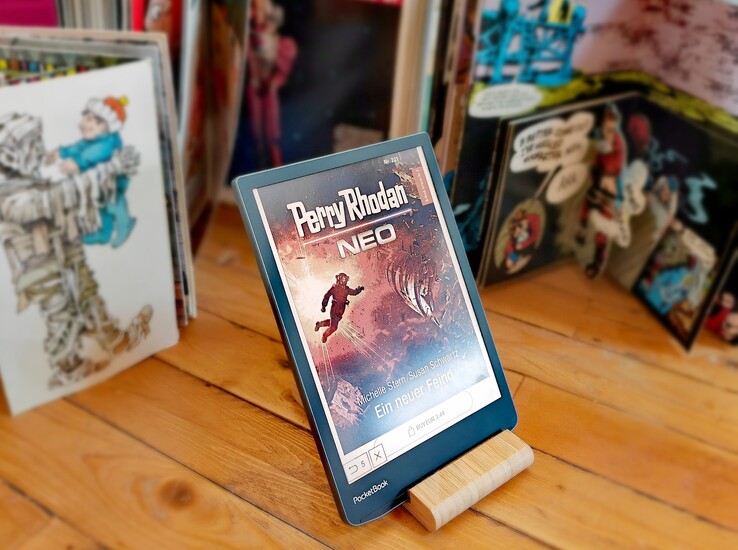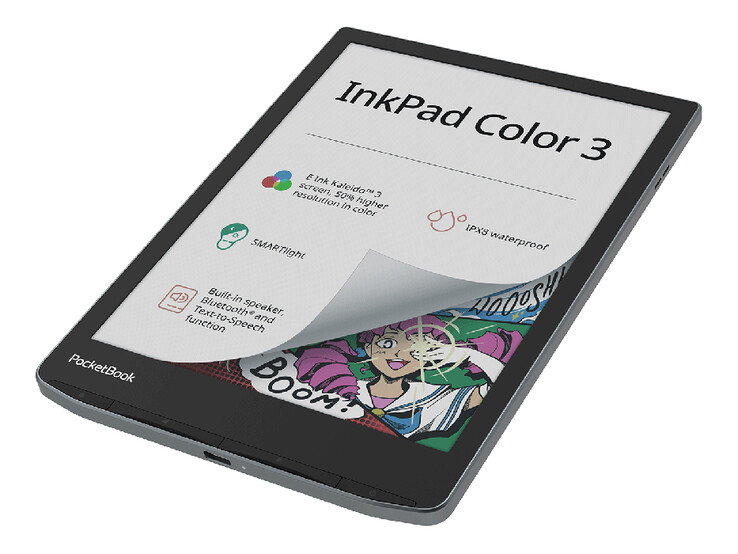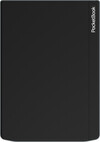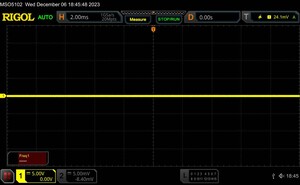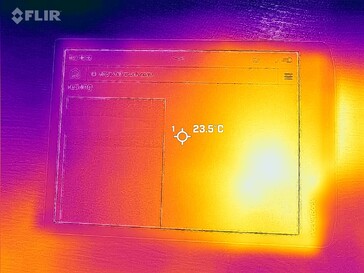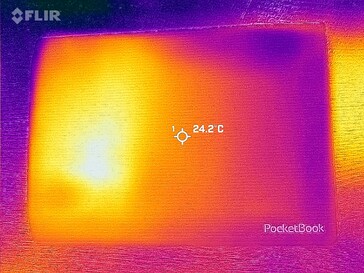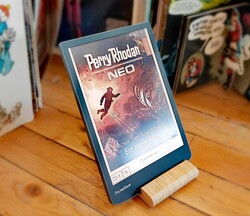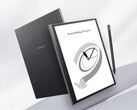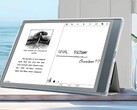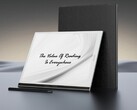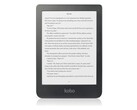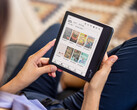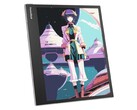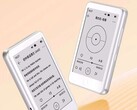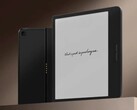PocketBook InkPad Color 3 e-reader review - Great for comic fans thanks to vibrant colors
Possible competitors in comparison
Rating | Date | Model | Weight | Drive | Size | Resolution | Price |
|---|---|---|---|---|---|---|---|
| 75.7 % v7 (old) | 12 / 2023 | PocketBook InkPad Color 3 unknown, unknown | 269 g | 32 GB eMMC Flash | 7.80" | 936x702 | |
| 77.2 % v7 (old) | 12 / 2023 | Onyx Boox Page SD 662, Adreno 610 | 195 g | 32 GB eMMC Flash | 7.00" | 1682x1264 | |
| 75.2 % v7 (old) | 08 / 2023 | Lenovo Smart Paper RK3566, Mali-G52 MP2 | 408 g | 64 GB eMMC Flash | 10.30" | 1872x1404 | |
| 79.4 % v7 (old) | 08 / 2022 | Huawei MatePad Paper Kirin 820e, Mali-G57 MP6 | 360 g | 64 GB UFS 2.2 Flash | 10.30" | 1872x1404 |
Case and features - Pressure sensitive plastic
The InkPad Color 2 was only released in May 2023, and now the successor was released in November 2023: The InkPad Color 3 has a more recent E-Ink display, but otherwise, the two readers hardly differ.
The housing has also remained the same: A plastic chassis, which has a slightly wider frame on one short side and houses the operating buttons here. The back is ribbed and matt. It is pleasant to the touch but shows numerous fingerprints after a short period of use. The workmanship is good and the gaps are clean. However, the stability is not entirely convincing, especially in the area of the controls, the chassis feels quite flexible and creaks noticeably when pressure is applied.
On the other hand, the housing is protected against water in accordance with IPX8. This means that it is not a problem if you take the device out in the rain, and the e-reader can even withstand a dip in the bath without any problems.
1 GB of RAM is sufficient for an e-reader, but disqualifies it for more complicated tasks. With 32 GB, there is enough space for e-books, but the memory cannot be expanded with a microSD card. Users can connect external headphones or speakers via Bluetooth 5.0.
Communication, software and operation - Rather slow WLAN
PocketBook does not make any statements about the WLAN module used, but given the speeds achieved, we assume that WiFi 4 is the fastest possible WLAN standard. In our tests with the Asus ROG Rapture AXE11000 reference router, the InkPad Color 3 achieves around 60 MBit/s, which is significantly slower than many of its competitors. However, the speed is sufficient for downloading books and occasionally surfing the net.
The reader cannot connect to mobile networks, and it is also not possible to determine its position.
The software of the PocketBook InkPad Color 3 is based on Linux and is proprietary. The manufacturer does not say how long updates will be available, but 2-year-old devices are still receiving occasional new firmware versions.
Pre-installed features include extensive e-reading software, a player for audiobooks and music, a note app, a browser, a photo gallery, an RSS news reader, and the software for OnLeihe. The latter is interesting because it allows you to log in to your local library and borrow e-books without having to go through the browser. Some games are also available ex-works, such as chess and Sudoku.
However, apart from the existing applications, the range of functions of the e-reader can hardly be expanded: unlike some competitors, it is not possible to install Android apps, for example. This would make it easier to access the e-book libraries of other providers and to use other reader software if you don't like the pre-installed one.
The e-reader does not allow the device to be locked using a password, and only the settings can be locked. The touchscreen usually responds reliably, although we had to restart the device once during our test as it was no longer possible to make any entries via the screen. There are four hardware buttons on the frame of the device: Home, Forward, and Back as well as a power button. The scroll buttons are slightly raised, making them very easy to feel even in the dark.
| Networking | |
| PocketBook InkPad Color 3 | |
| iperf3 transmit AXE11000 | |
| iperf3 receive AXE11000 | |
| Onyx Boox Page | |
| iperf3 transmit AXE11000 | |
| iperf3 receive AXE11000 | |
| Lenovo Smart Paper | |
| iperf3 transmit AXE11000 | |
| iperf3 receive AXE11000 | |
| Huawei MatePad Paper | |
| iperf3 transmit AXE11000 | |
| iperf3 receive AXE11000 | |
E-reading - Many formats supported
PocketBook installs its store, which is also very well stocked with local titles depending on the country selected. As fixed book prices apply in Germany, e-books are available here at the same prices as everywhere else. Ebooks can, of course, also be copied directly from the cloud or via USB cable from a PC. The following formats are supported: ACSM, CHM, DJVU, DOC, DOCX, EPUB, EPUB(DRM), FB2, FB2.ZIP, HTM, HTML, MOBI, PDF, PDF (DRM), PRC, RTF, TXT, AZW, CBR, AZW3 and CBZ.
The pre-installed reader software enables a finely graduated zoom of the display size using two-finger gestures. There is a wide selection of fonts, you can determine the width of the margin around the text and also the line spacing. The view can be rotated, notes and highlights can be made, and individual terms can be looked up using the dictionary.
Text-to-speech allows the text to be read aloud by a synthesized voice, with 26 different languages supported. However, the intonation is not always appropriate, so this function is more of an emergency solution and useful for accessibility.
Display - Vivid colors on 7.6 inches
The Kaleido 3 panel from E-Ink can display 4,096 color levels and 16 grey levels. The grayscale resolution is 1,872 x 1,404 pixels, while it is halved for the color display. The screen of the InkPad Color 3 measures 7.8 inches in diameter and is matt so that it can also be used well in bright environments. Thanks to the E-Ink process, in which actual ink particles are positioned using electrical charges, you don't even need a backlight.
When it gets dark, you can activate the lighting and either select the brightness and color temperature yourself or let the sensor determine it automatically. In our test with the spectrophotometer, we measured a maximum brightness of 82 cd/m², which is sufficient for the vast majority of situations. Nevertheless, competitors such as the Onyx Boox Page sometimes offer significantly brighter lighting.
Thanks to the E-Ink tablet, you don't have to worry about PWM flickering and we really like the color display of the PocketBook InkPad Color 3: Colors look quite vibrant for an E-Ink tablet, so fans of colorful comics will also get their money's worth. The display of documents is sharp and rich in contrast. In addition, once an image has been built up, it does not have to be constantly refreshed, which is easy on the eyes and the battery.
However, the disadvantages of e-ink displays also exist here: Due to the relatively slow page load and the comparatively low number of colors, videos are hardly useful to watch in the browser. From time to time, remnants of the previous image remain on the screen so that they can still be seen as shadows.
| |||||||||||||||||||||||||
Brightness Distribution: 81 %
Center on Battery: 75 cd/m²
Contrast: ∞:1 (Black: 0 cd/m²)
| PocketBook InkPad Color 3 E-Ink, 936x702, 7.8" | Onyx Boox Page E-Ink, 1682x1264, 7" | Lenovo Smart Paper E-Ink, 1872x1404, 10.3" | Huawei MatePad Paper E-Ink, 1872x1404, 10.3" | |
|---|---|---|---|---|
| Response Times | ||||
| Response Time Grey 50% / Grey 80% * (ms) | 120 ? | 134.4 ? | 121 ? | |
| Response Time Black / White * (ms) | 116 ? | 27.5 ? | 94 ? | |
| PWM Frequency (Hz) | ||||
| Screen | 59% | 30% | -13% | |
| Brightness middle (cd/m²) | 75 | 141 88% | 113 51% | 61.9 -17% |
| Brightness (cd/m²) | 77 | 141 83% | 106 38% | 60 -22% |
| Brightness Distribution (%) | 81 | 85 5% | 83 2% | 80 -1% |
| Black Level * (cd/m²) | ||||
| Greyscale dE 2000 * | 9.9 | 9.1 | ||
| Gamma | 1.371 160% | 2.02 109% | ||
| CCT | 7116 91% | 6848 95% | ||
| Total Average (Program / Settings) | 59% /
59% | 30% /
30% | -13% /
-13% |
* ... smaller is better
Screen Flickering / PWM (Pulse-Width Modulation)
| Screen flickering / PWM not detected | |||
In comparison: 53 % of all tested devices do not use PWM to dim the display. If PWM was detected, an average of 8111 (minimum: 5 - maximum: 343500) Hz was measured. | |||
Performance, emissions and battery life - Long endurance
The performance of the PocketBook InkPad Color 3 is not so easy to determine, as we can hardly run any benchmarks on the proprietary Linux system. PocketBook also does not provide any details about the processor used. The manufacturer only confirms that it is a quad-core with 4 x 1.8 GHz.
In any case, the performance is completely sufficient for reading books and documents: pages are turned and opened quickly. However, even when navigating through the system, there are always short waiting times.
Even in the browser, typing in addresses or clicking on buttons is not always as responsive as one would wish. Impatient people, therefore, often end up on the wrong page. It is also annoying that you have to wait after opening the browser until it has redirected you to the Google homepage.
The e-ink tablet hardly heats up under prolonged load. At a maximum of 30.3 °C, a slight change in temperature at the back is noticeable but by no means problematic.
The mono speaker is located on one of the long sides of the tablet. It can't get too loud and sounds a little treble-heavy, but voices are reproduced clearly. If you also want to hear bass and more mids, you should connect headphones or speakers either via the USB-C port or Bluetooth. This works without any problems, and the transmitted sound signal is clear.
The InkPad Color 3 comes with a 2,900 mAh battery. This is enough for 15:44 hours of continuous reading with low screen lighting. Nothing should stand in the way of a full day of e-books. However, it takes time for the battery to reach 100% again: a full charge takes just under 3 hours.
Temperature
(+) The maximum temperature on the upper side is 27 °C / 81 F, compared to the average of 33.7 °C / 93 F, ranging from 20.7 to 53.2 °C for the class Tablet.
(+) The bottom heats up to a maximum of 30.3 °C / 87 F, compared to the average of 33.2 °C / 92 F
(+) In idle usage, the average temperature for the upper side is 20.5 °C / 69 F, compared to the device average of 30 °C / 86 F.
Speaker
PocketBook InkPad Color 3 audio analysis
(±) | speaker loudness is average but good (75.8 dB)
Bass 100 - 315 Hz
(-) | nearly no bass - on average 30.8% lower than median
(+) | bass is linear (6.9% delta to prev. frequency)
Mids 400 - 2000 Hz
(±) | reduced mids - on average 6.1% lower than median
(±) | linearity of mids is average (8.5% delta to prev. frequency)
Highs 2 - 16 kHz
(+) | balanced highs - only 3.8% away from median
(+) | highs are linear (3.8% delta to prev. frequency)
Overall 100 - 16.000 Hz
(±) | linearity of overall sound is average (26.6% difference to median)
Compared to same class
» 83% of all tested devices in this class were better, 4% similar, 13% worse
» The best had a delta of 7%, average was 20%, worst was 129%
Compared to all devices tested
» 81% of all tested devices were better, 4% similar, 15% worse
» The best had a delta of 4%, average was 24%, worst was 134%
Onyx Boox Page audio analysis
(±) | speaker loudness is average but good (74.1 dB)
Bass 100 - 315 Hz
(-) | nearly no bass - on average 35.3% lower than median
(±) | linearity of bass is average (10.9% delta to prev. frequency)
Mids 400 - 2000 Hz
(±) | reduced mids - on average 7.3% lower than median
(±) | linearity of mids is average (9.6% delta to prev. frequency)
Highs 2 - 16 kHz
(±) | higher highs - on average 8.9% higher than median
(±) | linearity of highs is average (13.5% delta to prev. frequency)
Overall 100 - 16.000 Hz
(-) | overall sound is not linear (36.4% difference to median)
Compared to same class
» 96% of all tested devices in this class were better, 2% similar, 3% worse
» The best had a delta of 7%, average was 20%, worst was 129%
Compared to all devices tested
» 94% of all tested devices were better, 1% similar, 5% worse
» The best had a delta of 4%, average was 24%, worst was 134%
Battery life
| Battery runtime - Reader / Idle | |
| Average of class Tablet (11.5 - 55.2, n=56, last 2 years) | |
| PocketBook InkPad Color 3 | |
| Onyx Boox Page | |
| Lenovo Smart Paper | |
| Huawei MatePad Paper | |
Pros
Cons
Verdict - Color-intensive e-reader with good endurance
With the PocketBook InkPad Color 3, you can enjoy your favorite e-books for a long time without having to worry about battery life. In addition, books and especially comics can be displayed very well on the e-ink color display with vibrant colors.
There are much more powerful e-ink tablets in this price range, such as the Onyx Boox Page, but then you usually have to do without the color screen. Thanks to the proprietary software, the interface is very clear, and the pre-installed store and the OnLoan app offer many options for accessing e-books. However, if you want maximum flexibility, you are better off with an e-reader based on Android with corresponding app support.
The case of the PocketBook InkPad Color 3 is not too heavy and can easily withstand a stay in fresh water. However, it could be a little more stable, especially around the controls. The Internet is not too fast, but is sufficient for downloading books.
The colorful screen and the powerful battery make the InkPad Color 3 a good e-reader. However, it lacks the flexibility of a device with Android.
The Onyx Boox Note Air 3 is significantly more expensive but you get an even larger color display and considerably more power. The Onyx Boox Page is a little cheaper without a color screen, but sports Android and a faster processor.
Price and availability
The PocketBook InkPad Color 3 is available at the time of testing directly from the manufacturer for 319 euros.
At amazon.de you can save a few euros and get the e-reader for 305.55 euros at the time of testing.
PocketBook InkPad Color 3
- 12/16/2023 v7 (old)
Florian Schmitt
Transparency
The selection of devices to be reviewed is made by our editorial team. The test sample was provided to the author as a loan by the manufacturer or retailer for the purpose of this review. The lender had no influence on this review, nor did the manufacturer receive a copy of this review before publication. There was no obligation to publish this review. As an independent media company, Notebookcheck is not subjected to the authority of manufacturers, retailers or publishers.
This is how Notebookcheck is testing
Every year, Notebookcheck independently reviews hundreds of laptops and smartphones using standardized procedures to ensure that all results are comparable. We have continuously developed our test methods for around 20 years and set industry standards in the process. In our test labs, high-quality measuring equipment is utilized by experienced technicians and editors. These tests involve a multi-stage validation process. Our complex rating system is based on hundreds of well-founded measurements and benchmarks, which maintains objectivity. Further information on our test methods can be found here.




